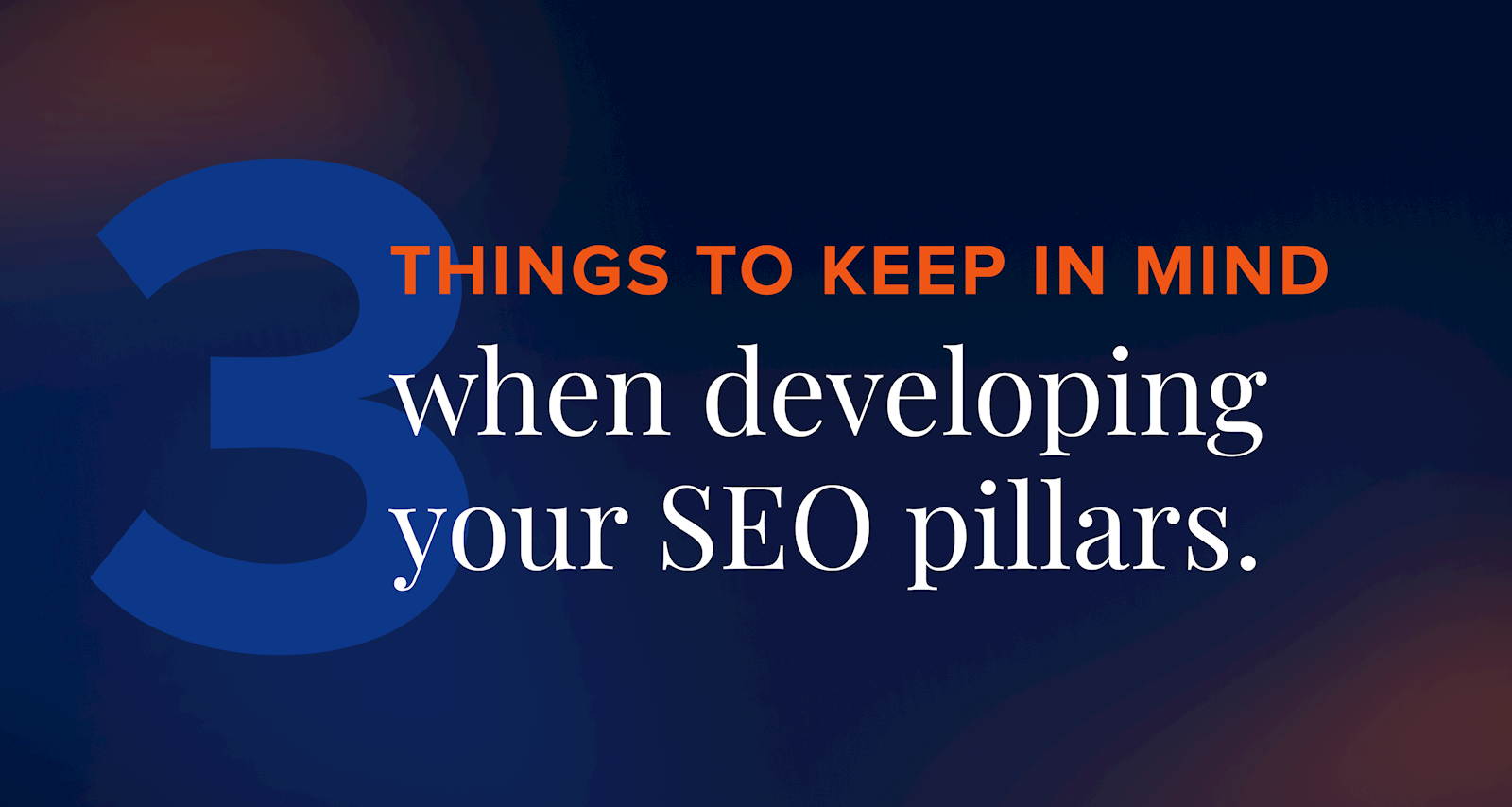Forget the Funnel. SEO Requires a Pillar Approach.
Published by Spinutech on June 19, 2024

Who doesn’t love a funnel?
Well the answer, as it turns out, is SEO.
If you’re in sales or marketing, you know the funnel. It’s the series of stages that a prospective customer goes through from initial brand awareness to the final purchase decision.
Only you may need to think outside the funnel when it comes to SEO.
If you think of the user journey as a straight path, you’re not alone. You’re not wrong, either, at least if you’re talking about paid media, where you are feeding users into a preselected path.
SEO is more chaotic. Organic search is informational, so a lot of users are in the research phase. Organic users are going to click around your website and likely visit your site multiple times over days or weeks before converting, after they’ve done their research. Think of it less as guiding a user through a path and more as guiding them through information.
So forget the funnel and embrace content pillars instead.
What Are Content Pillars?
Content pillars are the core topics or themes that a brand focuses its SEO and content strategies around. They serve as the foundation for creating a consistent stream of content across various channels, including your website, social media channels, email marketing, and more.
For the purposes of SEO, we’re going to focus on content pillars for your website.
There are three things you need to keep in mind when developing your pillars.
1. Be Helpful
Google has a singular mission: To answer questions. We know this because they’ve taken steps to cut spam by 40% and added features like, “People Also Ask,” over the years. To accomplish that mission, Google needs you to provide the answers to users’ questions.
But questions are rarely answered in a funnel.
Being helpful to Google (and its searchers) means having extensive knowledge on a topic. You have to understand user intent and anticipate the follow-up questions a user will have.
If you want users to “go down the rabbit hole,” you have to dig the rabbit hole yourself. That is why we recommend linking content pieces together around central ideas and topics so users can easily find related pages. Don’t be so focused on driving them to conversion that you stop being helpful. Let them get comfortable and invite them to spend time on the site.
2. Demonstrate Your Understanding of the Topic
Optimizing a piece of content for a single keyword is an old school strategy that no longer works. Users today are rarely interested in a single keyword. They want a full conversation. Consider whether your content around a particular topic is as comprehensive as it can be.
You should also think less about keywords and more about filters, because volume isn’t everything. Sometimes what is more valuable to your users is specificity. Implementing filters around a topic can be a better driving force than keywords.
For example, if you are a bedding retailer, these could be your filters:
- Size: King, Queen, Full, Twin
- Material: Quilt, Comforter, Sheets, Blankets
- Season: Summer, Spring
- Design: Floral, Stripes, Kids
Brands also need to understand that the “why” is as important as the “what.” To build on the bedding retailer example, if you want to sell summer comforters, you should be explaining why a consumer would want to switch comforters in the summertime.
3. Sell Outcomes, Not Products
Once again, the “what” is not everything. Don’t focus all of your attention on selling a specific product or solution. Focus instead on the ideal outcome for the consumer and learn to accept that users may come to different conclusions about the path to that outcome.
SEO strategists can’t read minds, but they can understand intent. They know that someone searching for “comforters for hot sleepers” is looking to solve a specific problem.
That searcher wants to be able to sleep comfortably, even when it’s hot.
One user might decide to buy a lightweight comforter.
Another user might purchase a duvet and remove the insert during the summer.
Different routes to the same outcome.
By developing and implementing content pillars, you are creating multiple paths through your website and acknowledging that every path can end in a conversion.
Start Building Your SEO Pillar Pages
Did we mention we have an experienced construction crew? Our SEO and content strategists are uniquely qualified to help you implement a pillar structure for your website, ensuring you are delivering an experience that actually creates conversion opportunities for your users.
If you’re ready to start laying bricks, let’s chat.